Air pollution in Delhi often dominates discussions during winter season when pollution levels peak. However, data from the Central Pollution Control Board shows that the city faces polluted air for over 300 days a year.
Story in Numbers: How Air Pollution Affects Businesses
Delhi's air pollution is not just a winter phenomenon but a year-round issue, causing businesses to suffer losses worth billions
In fact, the days with "good" air quality are few and far between: just one day in 2023, three days in 2022, one in 2021, four in 2020 and two in 2019. The air quality is measured through Air Quality Index (AQI) values.
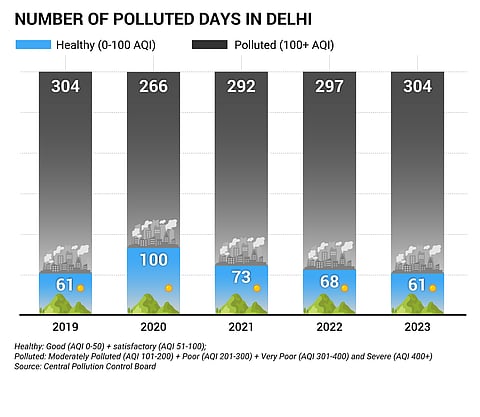
A 2021 draft report prepared by The Energy and Resources Institute (TERI) for the Delhi government, which is the latest available data, provides insights into air pollution in the city.
According to the report, transport is the largest polluter, contributing to most of air pollutants in Delhi. Within this sector, two-wheelers form the largest share of vehicular emissions.
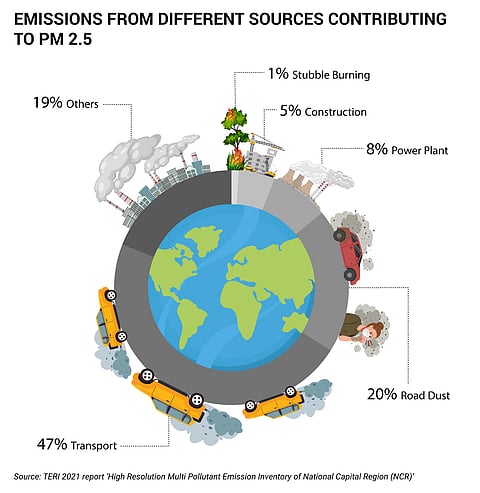
The report findings are based on air pollution measurements taken throughout the year. Things change as the winter begins—temperature drops, humidity rises, winds slow, and most importantly, farmers burn their crop residue (stubble burning) to prepare for the next sowing season.
The combination of these factors turns the air into a toxic smog that envelops the city. Stubble burning, which contributes less than a per cent to air pollution during the rest of the year, accounts for 25-30 per cent of pollution in winters.
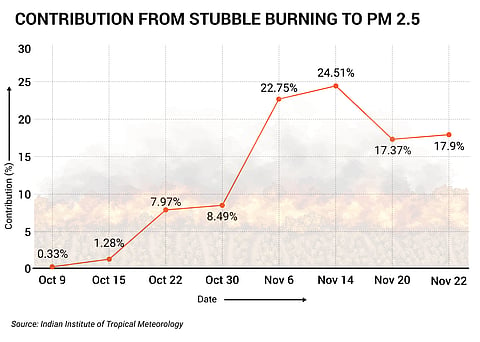
To tackle pollution, the Union government, along with Delhi and neighbouring state governments, has implemented measures to halt stubble burning. The recent data from the Indian Agricultural Research Institute shows a 50 per cent drop in stubble-burning incidents over the past three years. But if the incidents have fallen so much, why hasn’t the air quality improved?
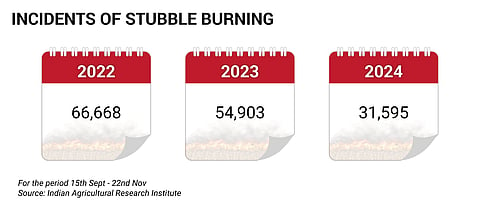
One plausible explanation, shared by a NASA scientist, is that farmers in North India have delayed stubble burning by 3-4 hours to evade satellite detection. The figures mentioned above are based on geostationary satellites, which scan areas only twice in 24 hours. Experts also believe that the drop in fire counts does not align with aerosol levels—small pollutants in the air—which have remained steady or even increased compared to previous years.
Be that as it may, the people in Delhi once again breathed heavily polluted air this year as the AQI levels hit the 500 mark—the threshold beyond which the pollution body does not measure air pollution.
The situation has become so alarming that it has led to the rise of a ‘smog economy,’ where people make purchasing decisions to protect themselves from air pollution. Meanwhile, businesses and informal workers, like rickshaw drivers and street vendors, face losses as GRAP-4 measures are enforced.
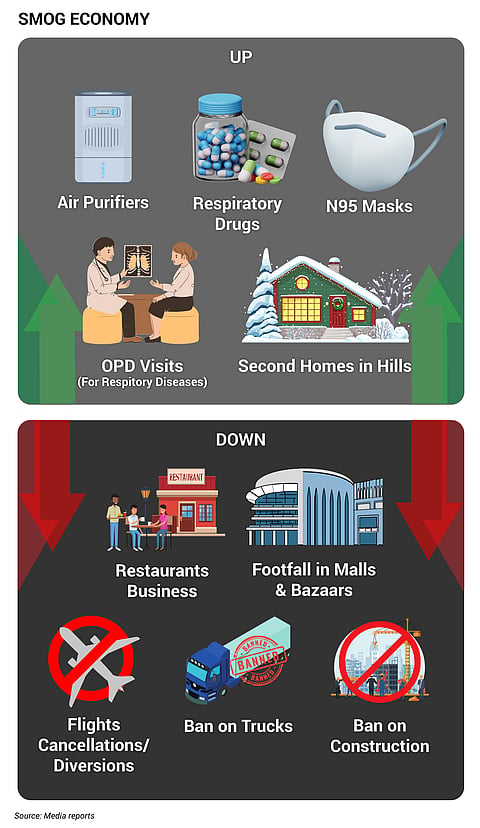
Firm estimates on the economic impact of pollution remain unclear, but studies highlight how micro-level effects on health, productivity and labour supply add up to macro-level consequences.
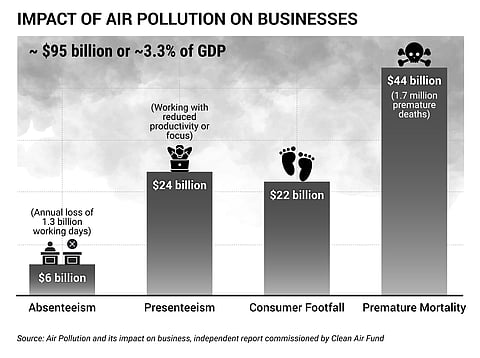
According to a report by Dalberg Advisors, Clean Air Fund, Blue Sky Analytics and CII, air pollution costs Indian businesses Rs 7 lakh crore (around $95bn) every year, nearly half the cost of managing the COVID-19 pandemic.